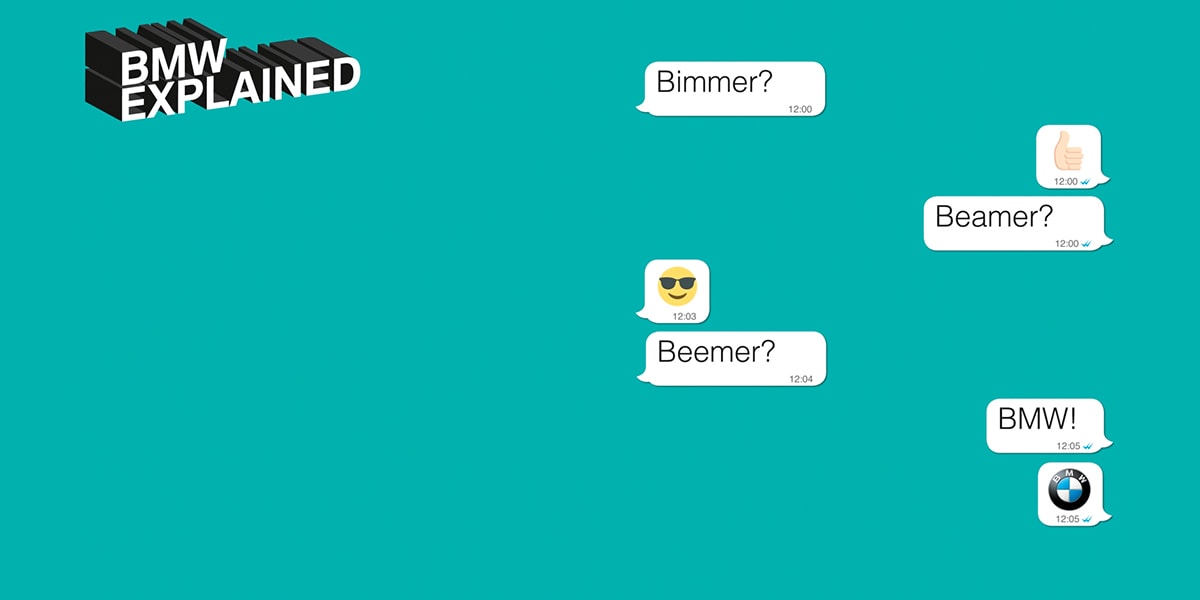
Researchers from Western University, Stockton University, and University of Massachusetts Amherst published a new Journal of Marketing article that examines if firms benefit from adopting popular nicknames in their branding efforts.
The study, forthcoming in the Journal of Marketing, is titled “BMW is Powerful, Beemer is Not: Nickname Branding Impairs Brand Performance” and is authored by Zhe Zhang, Ning Ye, and Matthew Thomson.
Many brands have popular nicknames that have become a part of daily conversations. BMW is commonly referred to as Beemer, Bloomingdale’s as Bloomie’s, Rolex as Rollie, Walmart as WallyWorld, and Starbucks as Starbies.
Given their popularity, some marketers have embraced these names in their own branding efforts. For instance, in 2021, Bloomingdale’s officially adopted “Bloomie’s” for its new store in Fairfax, Virginia; Target launched a style campaign in 2018 with the tagline “Fall for Tarzhay All Over Again;” and the Howard Johnson hotel chain slogan goes “Go Happy. Go HoJo.”
Do firms actually benefit from adopting popular nicknames in their branding efforts? This new study finds that nickname branding is actually detrimental to brand performance. This is because brand nicknames are usually given by consumers. Zhang explains that “accepting a consumer-generated nickname suggests that a brand implicitly admits that consumers are ‘in charge’ and that they publicly accept and promote an altered identity bestowed by consumers. When a brand starts to accept and even adopt a nickname given by consumers, it makes the brand seem less powerful.”
Nickname Use by Customers Versus Nickname Use by Marketers
Many brands closely follow consumers’ language use, especially on social media. However, the purpose of this monitoring should be to generate insights, not to mechanically repeat what consumers say. Brand nicknames are indeed terms of endearment, but only when they are used by the right person (i.e., consumers). When used by marketers, nicknames do not bring consumers closer to the brand. In fact, copying what might be construed as consumers’ “intellectual property” makes the brand appear weak.
Marketers should recognize that there is a difference between a consumer using a nickname and companies using that nickname for branding. The research team says that because consumer nickname use does not signal that a brand submits to consumer influence, it is less likely to weaken perceptions of brand power. In fact, prior research has shown that brand nicknames may lead to desirable consequences when they are used by consumers. “Marketers should recognize the differences in nickname use by consumers versus by marketers,” says Thomson. “While one may want to avoid adopting a nickname for marketing, nickname use within the consumer community should not be discouraged.”
In addition, brands must carefully evaluate their brand stereotype (i.e., competent vs. warm) and message type (transactional vs. communal) before adopting a nickname. It seems plausible that some brands may benefit from using their nicknames under certain conditions. For example, when a small-town, family-owned restaurant adopts a popular nickname given by the locals for fundraising for the community library, people may not necessarily feel it is inappropriate because the business was not meant to be powerful and its motive is to benefit the community. Instead, the nickname may become an emotional tie that activates consumers’ community identity and could attract more donations for the local community.
Furthermore, it is important for marketers to evaluate the meaningfulness of their brand name change. For example, Apple Computer became Apple, IHOP temporarily became IHOb, and Dunkin’ Donuts became Dunkin’. These were meaningful name changes and part of the brands’ repositioning strategies. The new names clearly tell consumers what the brand wants to be: Apple offers more than personal computers, Dunkin’ offers more than just donuts, and IHOb burgers should be taken seriously. These are internally initiated alterations that signal the brand’s new identity and market position, unlike nickname branding activities that are initiated externally.
Thomson says that “if nickname branding is not accompanied by substantial changes to the brand’s core identity, it may appear to be a relatively superficial effort to flatter consumers.” For example, Radioshack’s adoption of a nickname (e.g., tagline: “Our friends call us the Shack”) was a high-profile example of explicitly submitting to consumer influence and credited with hastening the company’s trajectory towards bankruptcy.
Lessons for Chief Marketing Officers
- Marketers need to be careful about appropriating consumers’ language.
- Marketers should recognize the difference between consumer nickname use versus nickname branding. For example, when General Motors banned the use of the “Chevy” nickname within the organization in 2010, the company received enormous criticism for not being consumer-oriented. However, critics overlooked the fact that the policy was meant to reduce the internal use of the nickname (e.g., when a salesperson talks to consumers) and not to stop consumers from using it externally.
- Some brands may benefit from using their nicknames under certain conditions.
- Renaming a brand may be necessary as a brand grows. However, if nickname branding is not accompanied by substantial changes to the brand’s core identity, it may appear to be a superficial effort to flatter consumers.


Leave a Reply